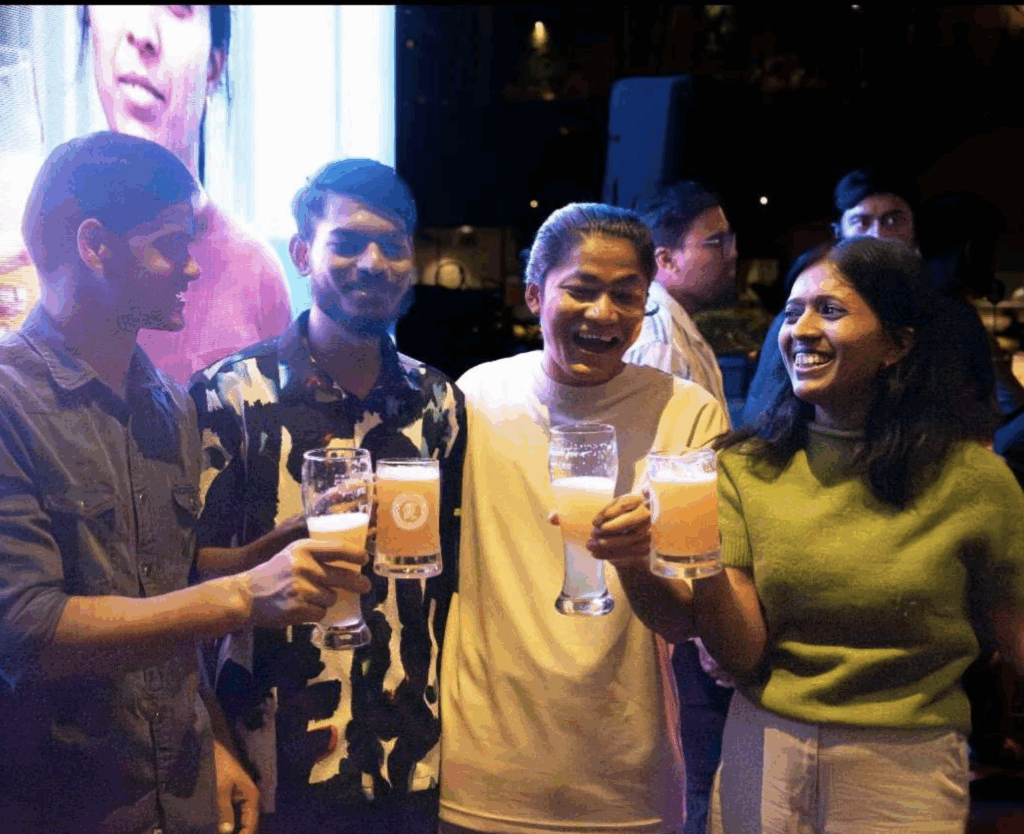BREWING BEYOND
BOUNDARIES:
MEGHA DALIMBE’S
STORY

Nivedita Bhalla
In house curator (WSCI)
Wine & Spirits Club of India
If beer had a patron goddess, she might look
suspiciously like Megha Dalimbe. Instead of
sitting on a throne, however, she would probably
be fiddling with pH meters, adjusting mash
temperatures and making sure the head on your
pint stands proud and perfect. Megha’s story isn’t
the straight highway you’d imagine; it’s a trail of
stubborn choices, science textbooks and a quiet
but consistent refusal to fit into the moulds that
others kept handing her.
From a child glued to the Discovery Channel,
wide-eyed and learning how things work, to
defying her Army dad’s expectations and
becoming the only woman working in Goa’s
legendary King’s Beer brewery, to later stepping
into the role of master brewer at Byg Brewski,
Megha has spent the last six years crafting beers
that people in Bangalore are glad to queue up
for.
But here’s the thing: Megha’s journey is inspiring
not because she’s a woman in a male-dominated
field, though that’s certainly unusual in India, but
because she never wore the mantle of “pioneer”
too heavily on her shoulders. When I asked her
about challenges, she didn’t invoke grand
feminist manifestos or dramatic battle cries; she
spoke instead of the small, everyday
39
negotiations: entering male-only spaces,
brushing off second glances, making subtle
trade-offs and enduring with a straightforward
“itna toh karna padta hai” (you have to do this
much at least).
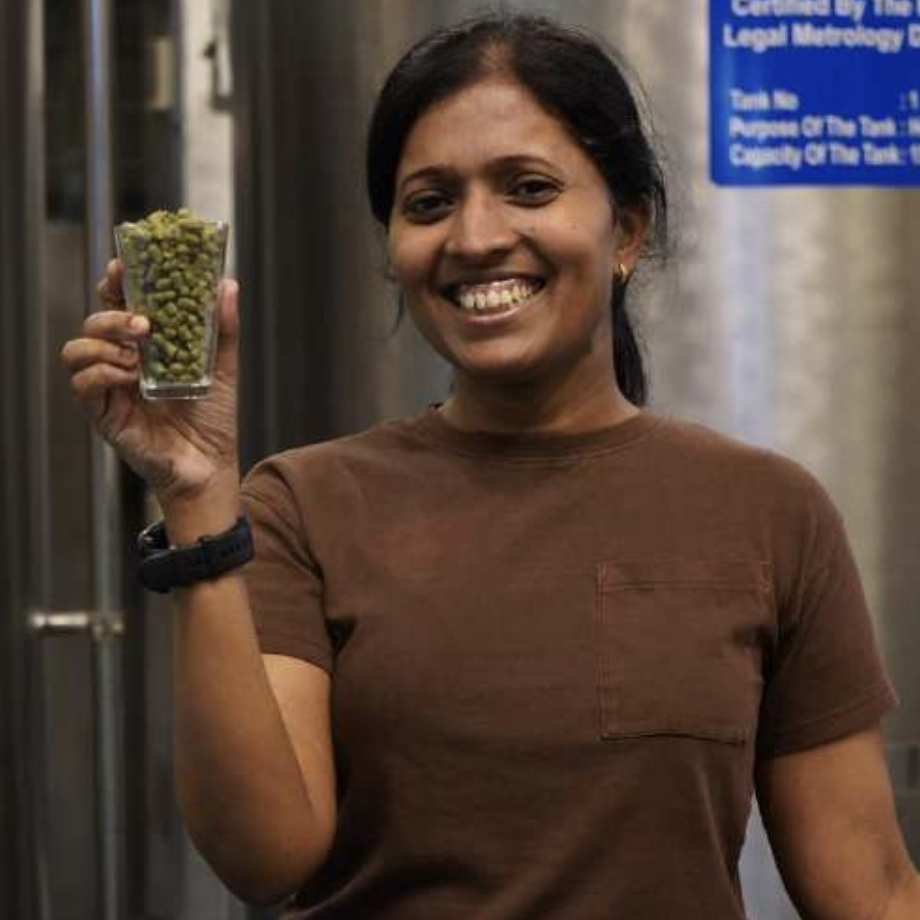
That phrase says it all, doesn’t it? Women, often
through conditioning, absorb a hundred tiny cuts
in their careers and still get on with it. What
floored me was her casual demeanour while
talking about it all, a sharp contrast to narratives
we often hear from men in brewing, whose
journeys, though difficult, usually don’t require
quite as much unpaid emotional labour. Those
invisible adjustments never make it into résumés,
but they define the texture of one’s career more
deeply than certificates or placements.
Discovering the Craft
Brewing at its core is chemistry in a frothy disguise. Sugars dance with yeast, proteins wrestle with heat, water adds its subtle accent and temperature is the conductor, making sure no one goes off-key. Megha, with her B.Tech in Chemical Engineering, was already learning the grammar of this language; what she did next, however, was unusual for most Indian students of her generation: instead of chasing software jobs or an airline career, she Googled her way into a degree no one in her family circle had even heard of: an M.Sc. in Wine, Brewing and Alcohol Technology from the Gargi Institute in Nashik.
Brewing at its core is chemistry in a frothy disguise. Sugars dance with yeast, proteins wrestle with heat, water adds its subtle accent and temperature is the conductor, making sure no one goes off-key. Megha, with her B.Tech in Chemical Engineering, was already learning the grammar of this language; what she did next, however, was unusual for most Indian students of her generation: instead of chasing software jobs or an airline career, she Googled her way into a degree no one in her family circle had even heard of: an M.Sc. in Wine, Brewing and Alcohol Technology from the Gargi Institute in Nashik.
At the time, it was one of the very few Indian
programs dedicated to brewing and distillation.
“Even I assumed at first there was no option but
to go abroad,” she laughed, remembering how
her classmates scrambled to apply to overseas
universities during the global recession. She
chose differently, and this decision turned out to
be pivotal.
Here’s the bigger issue: India has an abundant
supply of breweries and jobs; what we lack is
awareness. The gap between perception and
reality is stark. India’s alcohol market in 2025 is
valued at around $60 billion and is projected to
cross $101 billion by 2032. Per capita
consumption rose from just 1.3 litres in 2005 to
3.1 litres in 2022. By 2023, the beer industry
alone had created over 1.3 million jobs. Growth is
no longer limited to the big metro cities either;
smaller tier-2 and tier-3 towns now account for
almost 30 percent of premium spirits
consumption. What this means is simple enough,
but oddly overlooked: alcohol is no longer just a
luxury tucked away in urban lounges; it now acts
as social glue in growing towns all across India.
And yet, despite this reality, many parents and
students still hesitate to see brewing or alcohol
technology as a “serious” career.
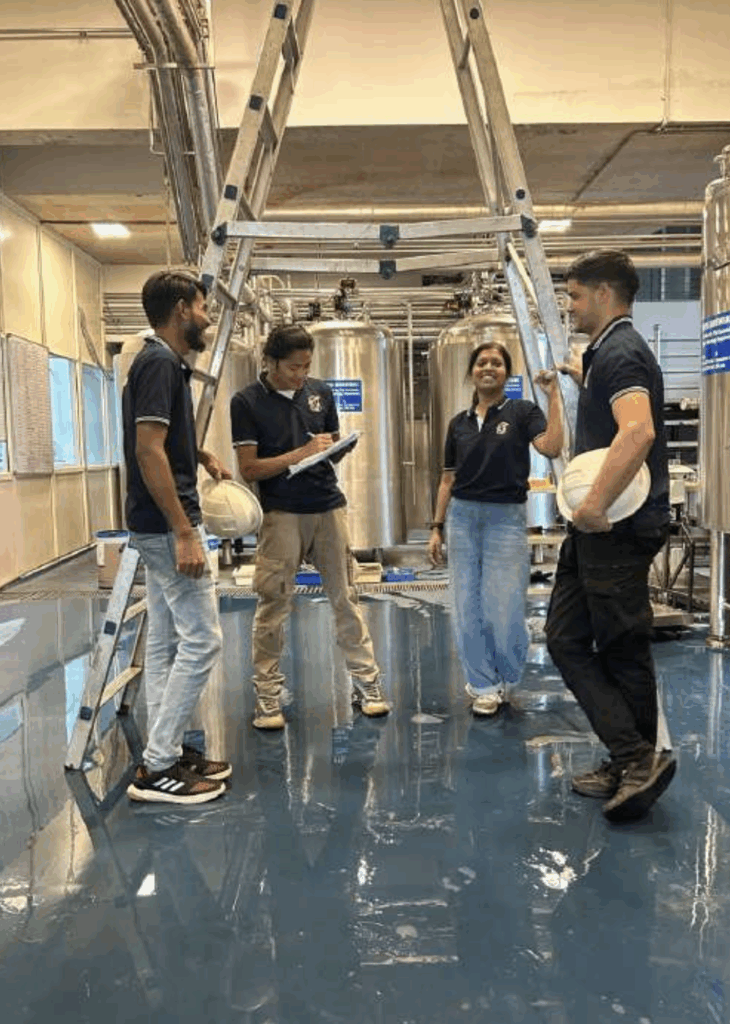
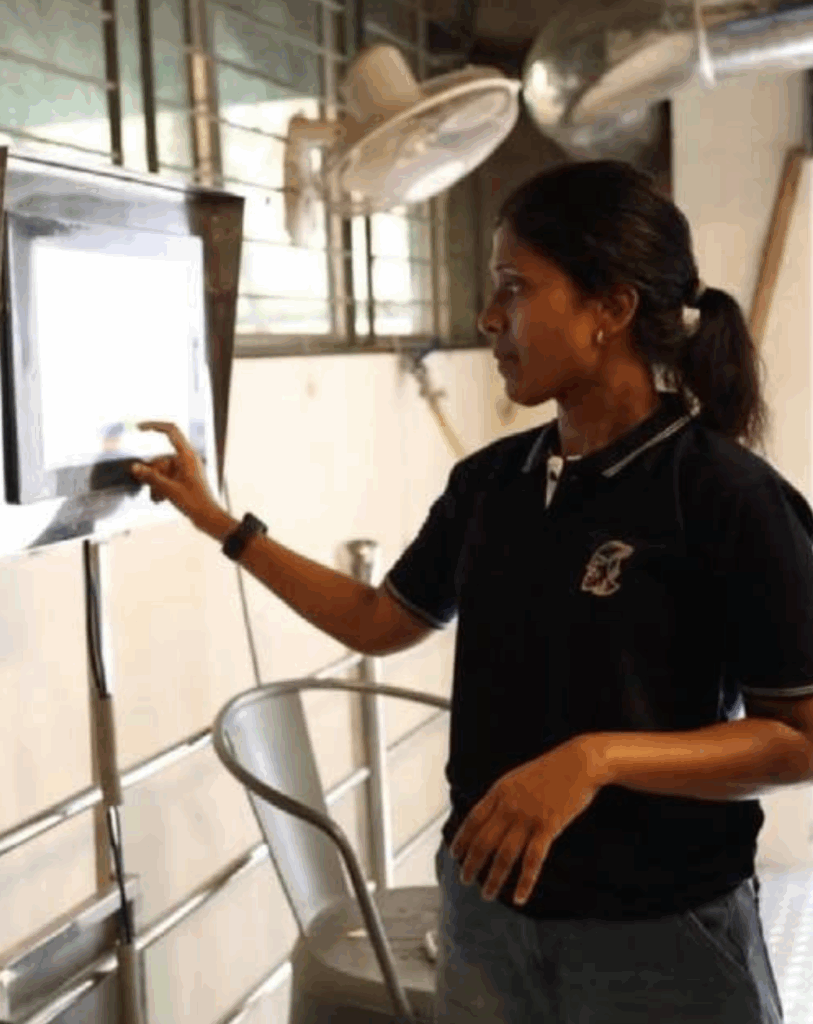
A Playbook for Students
This is where Megha grows animated. If you’re a student itching to build a career in brewing or distillation, this advice might as well be your handbook; half career guide, half love letter to science. “Start with science in your 11th and 12th,” she insists. “Physics, Chemistry, Biology, these are the foundation stones. Without them, you’ll find brewing to be a puzzle without the edges.”
This is where Megha grows animated. If you’re a student itching to build a career in brewing or distillation, this advice might as well be your handbook; half career guide, half love letter to science. “Start with science in your 11th and 12th,” she insists. “Physics, Chemistry, Biology, these are the foundation stones. Without them, you’ll find brewing to be a puzzle without the edges.”
From there, you have choices. One common
route is Chemical Engineering, which gives you
the tools to understand reaction dynamics and
industrial processes. Others take Biotechnology
or Microbiology, which are equally valuable since
they allow you to grasp fermentation and culture
handling in depth. At the postgraduate level, the
options open further: master’s programs in
biotechnology, food technology, and
fermentation science carry weight; and the rarer
degree in wine, brewing, and alcohol technology
is already considered a passport into specialised
roles.
Most students entering the brewing industry will
start at the bottom of the ladder. They become
brewing trainees, assistant brewers, lab
executives, or junior quality controllers.
It may not
be glamorous, but it gives you front-row access to how beer is actually made, tested, and
packaged. Over time, with discipline and passion,
people grow into brewmaster roles, quality
managers, and eventually heads of brewery
operations. To gain a professional edge, Megha
strongly recommends certifications. Globally
recognised programs like the Institute of Brewing
& Distilling’s Diploma in Brewing can shift your CV
from “interested amateur” to “serious
contender”.
And here’s the truth, she doesn’t sugarcoat.
Brewing is tough physical work. There are
12-hour shifts, heavy malt sacks to lift, endless
equipment cleaning, and the constant demand
for precision. It’s not the kind of career where you
sit behind a desk in an air-conditioned room all
day. But if you love the science and craftsmanship
involved in the process, she promises that even
the exhaustion turns into satisfaction when you
see someone smile as they lift a pint of the beer
that you’ve brewed.
My own perspective here is that brewing in India
is at the same inflexion point that IT was in the
90s. Craft breweries have exploded from fewer
than 20 in 2010 to over 350 in 2025, with
Bangalore alone crossing 80. This isn’t just a
scene anymore, it’s an ecosystem. The demand
for skilled people who can handle quality,
innovation, operations, and even sensory analysis
will only grow. Students who dare to take this
unconventional path today may find themselves
tomorrow’s thought leaders in brewing.
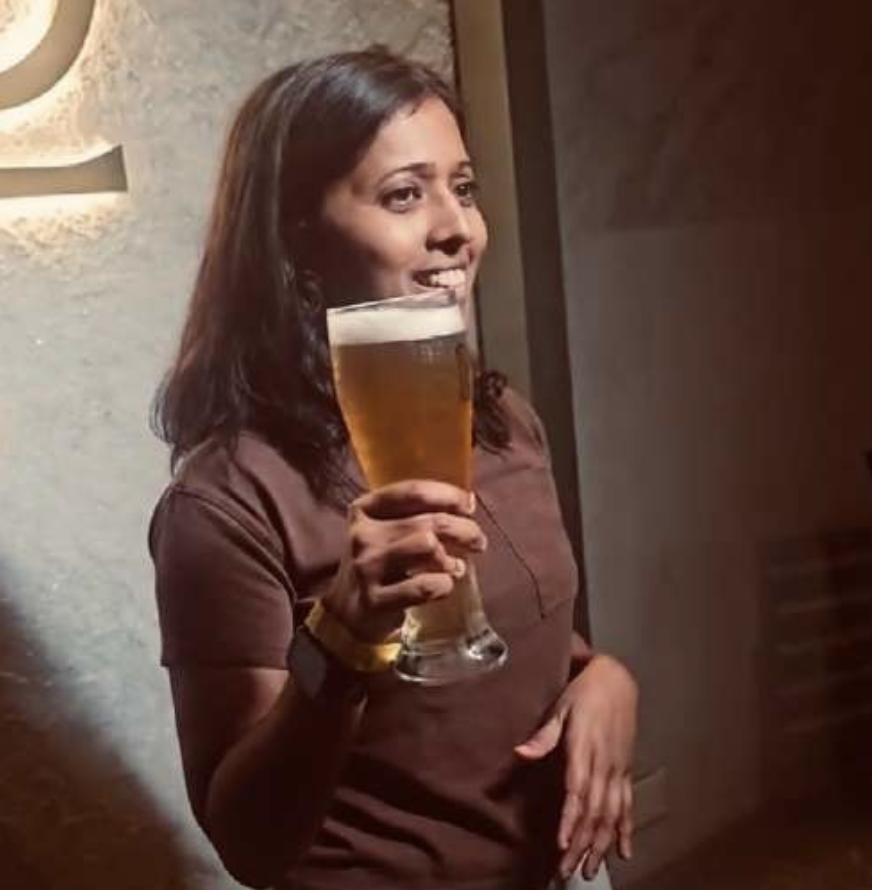
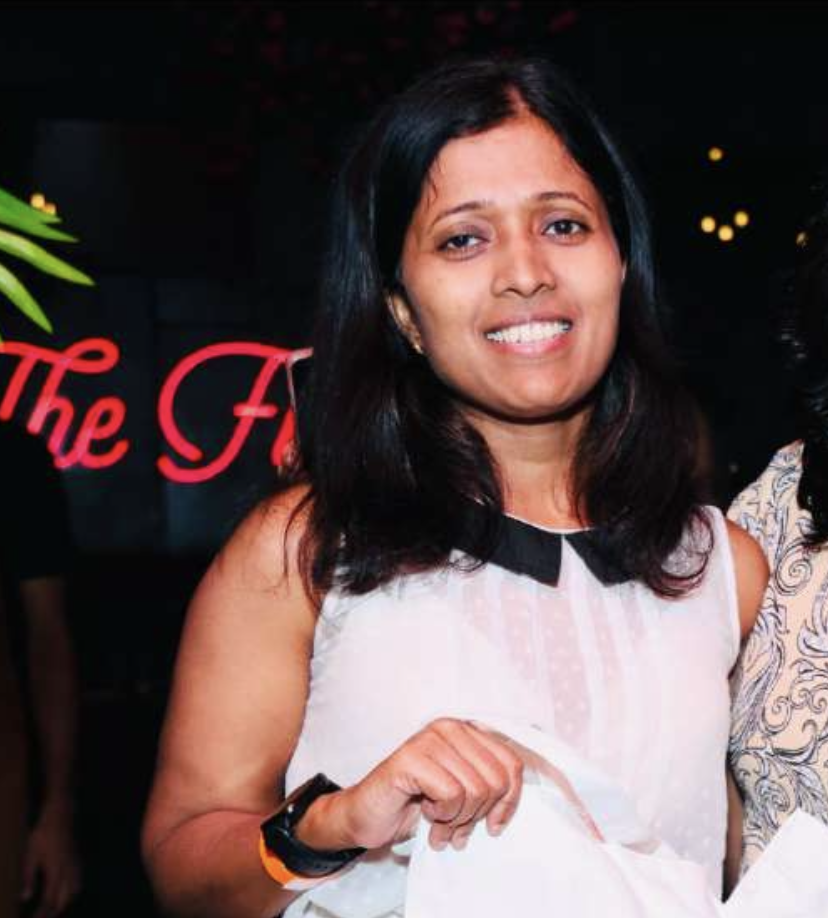
So, if you’re reading this and wondering whether
brewing can be your career, take Megha’s words
seriously. It isn’t just about pouring foamy mugs
and soaking up Instagram likes. It’s about mixing
science with craft, and finding joy in knowing that
you’ve orchestrated a perfect balance between
yeast, grain, hops, and water.
The First Break
Stories of first breaks often sound like destiny. Megha’s was less cinematic and more gutsy. She picked up the phone one day and called Vijay Monte Cruz, the owner of King’s Beer, Goa. He took a chance, and Megha walked into history as their only female employee at the time.
Stories of first breaks often sound like destiny. Megha’s was less cinematic and more gutsy. She picked up the phone one day and called Vijay Monte Cruz, the owner of King’s Beer, Goa. He took a chance, and Megha walked into history as their only female employee at the time.
When I asked if she faced awkwardness, she
chuckled. One male colleague had to handle
night shifts alone for years because management
wasn’t “comfortable” assigning them to her. “I
owe a lot to him, honestly,” she said with genuine
warmth. “If not for his adjustment, maybe I
wouldn’t have survived as smoothly as I did.”
Here’s where she diverges from the expected
narrative: she doesn’t dramatise. Many women in
brewing recount exhausting battles just to be
heard. Megha acknowledges those realities but
notes, almost sheepishly, that her journey was
relatively smoother. Her humility almost hides her
strength: the fact that she picked up that phone,
got through the door, and stayed there long
enough is remarkable in itself.
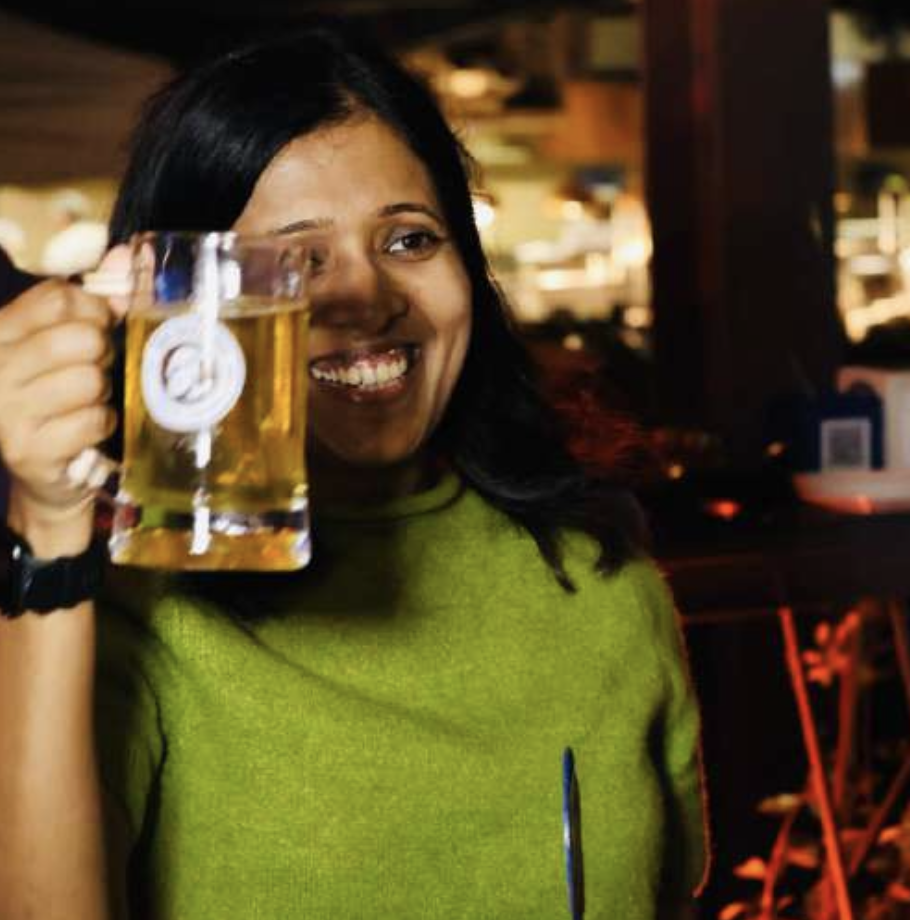
Innovation at Byg Brewski
Move forward a few years, and Megha’s experiments at Byg Brewski show why innovation is as essential to brewing as hops are to beer. “I was trusted to experiment,” she told me, “and that freedom made all the difference.” Her crown jewel? A collaboration with Uravu Labs to brew the world’s first Beer FromAir® pilsner, made entirely with atmospheric water. Bangalore’s groundwater is a brewer’s nightmare: hard, mineral-heavy, and inconsistent. Extracting water from the air using solar-powered desiccants ensured that the liquid Megha worked with was light, pure, and neutral in pH. To a casual drinker, this may sound like a sustainability stunt. But when she explained the technical side of smoother ‘saccharification’, more stable ‘Hefeweizen foam’, and enzymes working at their finest, I realised this wasn’t just branding: it was science making beer taste better.
Move forward a few years, and Megha’s experiments at Byg Brewski show why innovation is as essential to brewing as hops are to beer. “I was trusted to experiment,” she told me, “and that freedom made all the difference.” Her crown jewel? A collaboration with Uravu Labs to brew the world’s first Beer FromAir® pilsner, made entirely with atmospheric water. Bangalore’s groundwater is a brewer’s nightmare: hard, mineral-heavy, and inconsistent. Extracting water from the air using solar-powered desiccants ensured that the liquid Megha worked with was light, pure, and neutral in pH. To a casual drinker, this may sound like a sustainability stunt. But when she explained the technical side of smoother ‘saccharification’, more stable ‘Hefeweizen foam’, and enzymes working at their finest, I realised this wasn’t just branding: it was science making beer taste better.
Brewing Sustainability
Thinking about sustainability in brewing might sound like a trendy add-on, but in reality, it sits right at the heart of what Megha believes in. Waste in most industries is a problem; in brewing, it’s also an opportunity. Globally, around 85 percent of brewing by-products are what’s called spent grain. Of that, about 70 percent gets diverted into cattle feed, around 10 percent finds its way into biogas production, and the leftovers risk ending up in landfills, where one tonne of the waste materials releases more than 500 kilograms of carbon dioxide equivalent emissions.
Thinking about sustainability in brewing might sound like a trendy add-on, but in reality, it sits right at the heart of what Megha believes in. Waste in most industries is a problem; in brewing, it’s also an opportunity. Globally, around 85 percent of brewing by-products are what’s called spent grain. Of that, about 70 percent gets diverted into cattle feed, around 10 percent finds its way into biogas production, and the leftovers risk ending up in landfills, where one tonne of the waste materials releases more than 500 kilograms of carbon dioxide equivalent emissions.
Smaller breweries, she points out, have been
quietly running waste-to-value systems for years.
Farmers happily accept BSG (Brewer’s Spent
Grain) as cattle fodder. Bangalore-based food
innovation company Saving Grains upcycles them
into protein flour, health powders, and breads.
Many breweries have tied up with NGOs to get
this flour distributed within communities,
bringing both nutrition and affordability together
in a practical way.
The global big players are not behind.
Anheuser-Busch InBev’s ‘saved grain’ projects
now supply companies like Nestlé and Nomad
Foods with protein-rich ingredients entirely
derived from what was once dismissed as waste.
The circle closes elegantly: beer moves from tank
to tap, and then, indirectly, to biscuits and bread.
Imagine that journey of transformation: barley
grown in a field, brewed into beer, and then
reborn as cookies in someone’s lunchbox. Few
industries can claim such circularity.
AI in Brewing
Just as I was about to let her go, I couldn’t resist throwing in the buzziest question of all: AI in brewing. “In India, it’s still just chatter,” she admitted. Brewers here are aware of AI’s potential in spotting defects, predicting bottling faults, and minimising batch losses, but very few have implemented it. The barriers? Cost and training.
Just as I was about to let her go, I couldn’t resist throwing in the buzziest question of all: AI in brewing. “In India, it’s still just chatter,” she admitted. Brewers here are aware of AI’s potential in spotting defects, predicting bottling faults, and minimising batch losses, but very few have implemented it. The barriers? Cost and training.
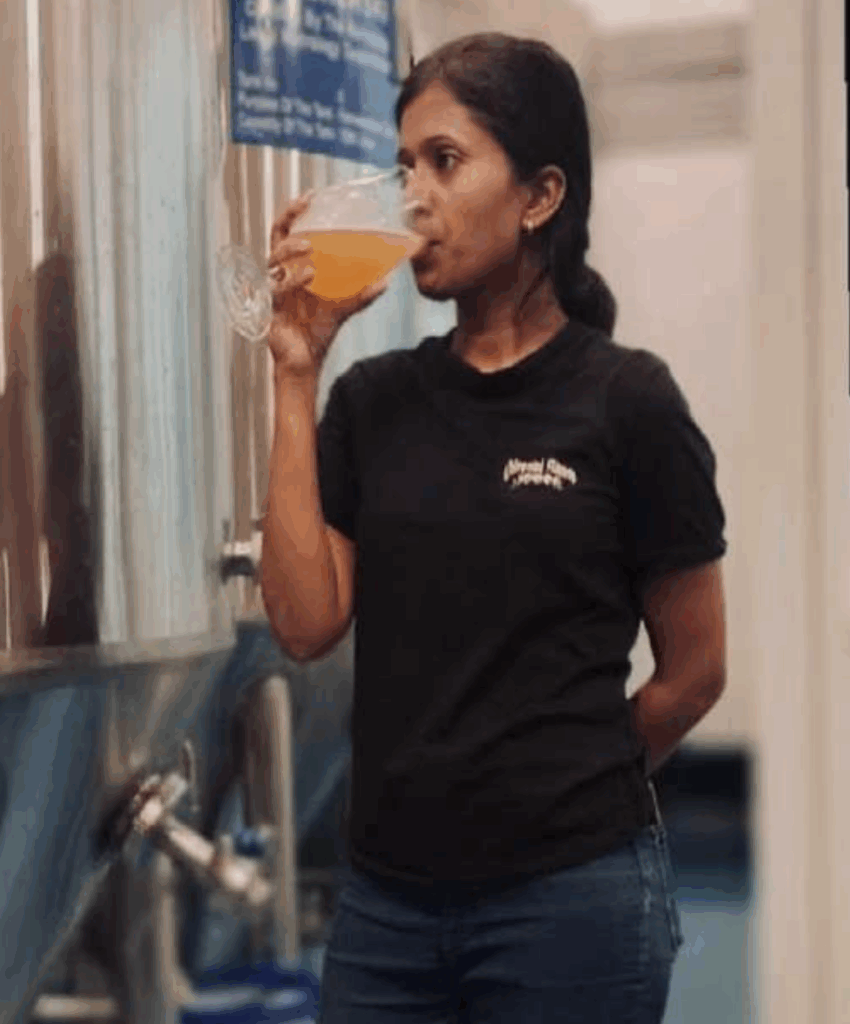
Globally, though, the numbers are striking. Close
to half of the world’s breweries have now adopted
AI for quality control, and in some cases,
fermentation consistency has improved by 25
percent. Predictive maintenance has cut
downtime in half and reduced production costs
by almost 15 percent, while also saving an
additional 12 percent in batch wastage. In fact,
the AI-in-alcohol market, which was already
valued at $1.2 billion in 2022, is projected to
grow to $3.5 billion by 2030.
For India’s craft breweries, these numbers feel far
away. Many of them are family-run outfits, or
passion-driven enterprises where budgets are too
tight to add technology that sophisticated. And
yet, Megha says, the interest is very much alive.
Almost every brewer she meets is at least curious,
if not fully convinced. She acknowledges that for
now, Indian brewing is still led more by heart and
instinct than by algorithms.
But the writing on the
wall is clear enough: when the time comes,
adoption here will not be optional.
Closing Reflections
When you trace Megha’s journey: from Discovery Channel child, to India’s lone woman at King’s Beer, to Byg Brewski’s innovative head, a pattern emerges. It isn’t about overnight revolutions. It isn’t about being louder or tougher than the next brewer. It’s about staying the course, taking chances others might not, and turning everyday chemistry into something you can taste in your glass.
When you trace Megha’s journey: from Discovery Channel child, to India’s lone woman at King’s Beer, to Byg Brewski’s innovative head, a pattern emerges. It isn’t about overnight revolutions. It isn’t about being louder or tougher than the next brewer. It’s about staying the course, taking chances others might not, and turning everyday chemistry into something you can taste in your glass.
Her story reminded me that outgrowing the
shoes you first wear is not the end of the journey:
it’s a sign that your feet are taking you somewhere
far greater. And with each pint she brews, Megha
Dalimbe isn’t just making beer: she’s making the
industry a little bigger, a little fairer, and a lot
more interesting.
